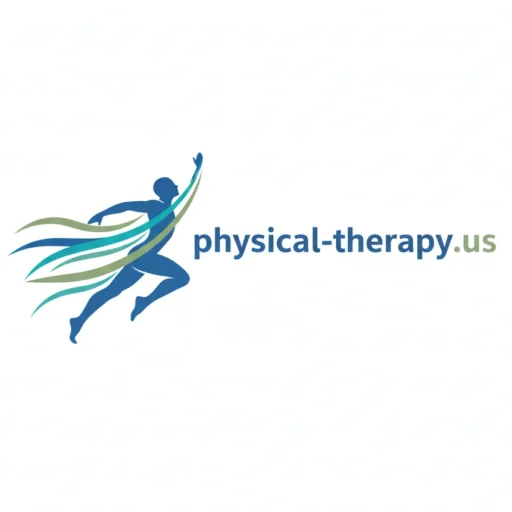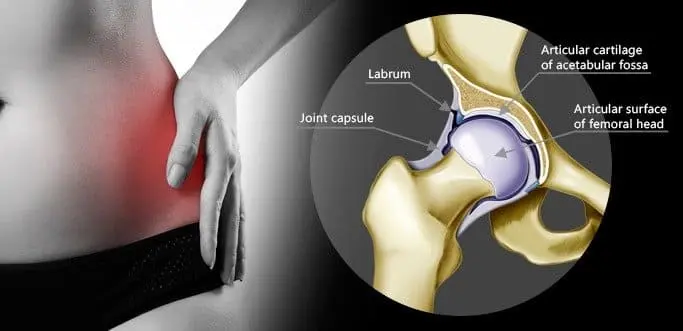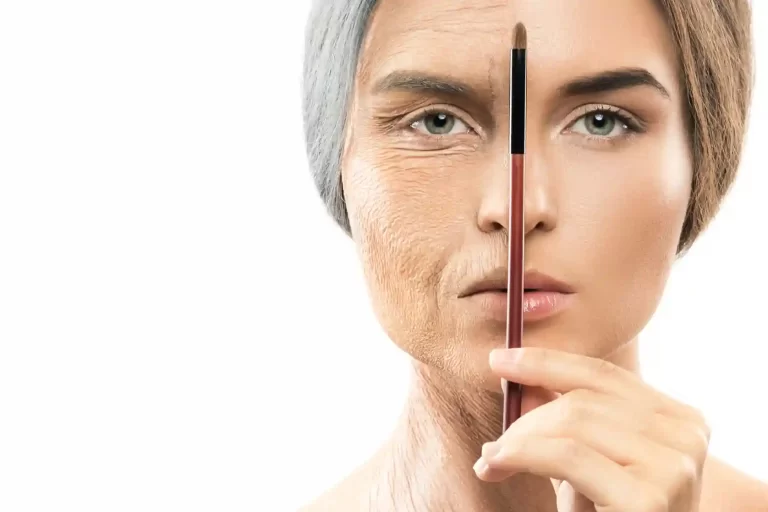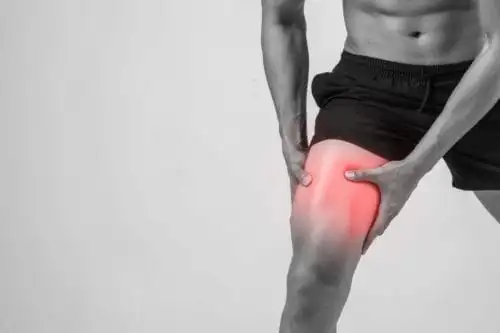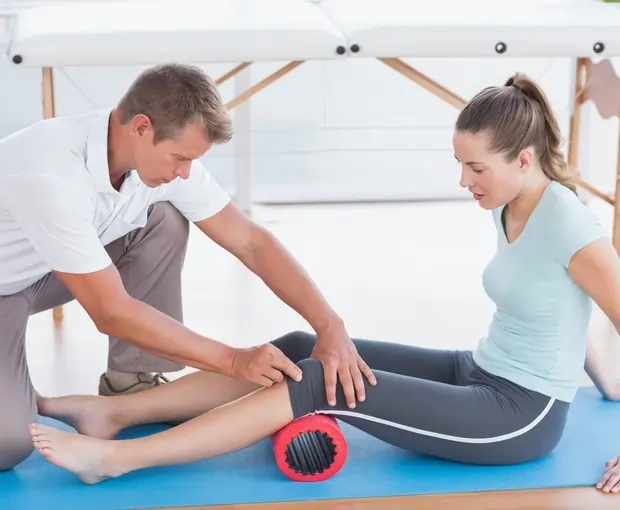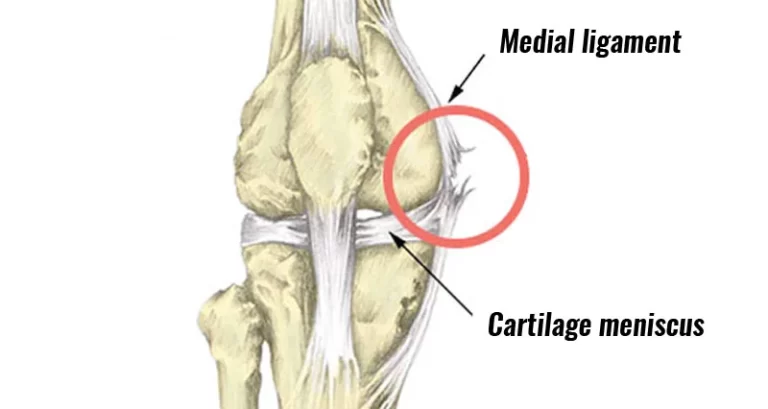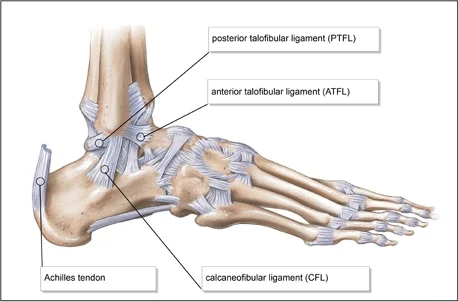Can Knee Pain Cause Groin Pain?
Introduction
Yes, when arthritis in the knee contributes to or is associated with groin pain, it’s referred pain. This is because pain from one region can occasionally be felt in another because the hip joint, which is connected to the groin, and the knee share nerve connections.
The prevalence of pain in the knee was 46.2% (32.2% for males and 58.0% for women), and it increased as women aged. Knee pain might occasionally be the sole indication of a hip issue. This is known as referred pain, and it occurs rather frequently.
A little strain in the muscles of your upper leg or problems with areas unrelated to your groin, such as your back or, more frequently, your hip, could be the cause of pain that extends from your knee to your groin.
Several things, such as hip-referred pain, muscular strains, and certain diseases like osteoarthritis, can cause knee and groin pain. For instance, hip osteoarthritis can result in pain that travels down the leg and into the knee, frequently manifesting as tightness or groin pain. Knee pain can also result from strained muscles in the hip or groin region. Referred pain is what this is known as, and it happens rather frequently.
Anatomy of knee pain and groin pain
The thighbone (femur) is joined to the shinbone (tibia) and kneecap (patella) via the intricate hinge joint that is the knee. The groin, sometimes referred to as the inguinal region, is the point where the abdomen and thigh connect. Both areas are made up of soft tissues, muscles, ligaments, and bones that cooperate to provide stability and mobility. The joint where the bones of the upper and lower legs meet is called the knee.
One of the body’s most strained joints, the knee has a complicated structure. There are several ways for people to get knee injuries. Often viewed as different problems, hip and knee pain can have a major influence on day-to-day activities and general health. The following conditions can cause pain in these areas: bursitis, sprains, fractures, and arthritis. Given the interconnectedness of our bodies, it is critical to comprehend the relationship between hip and knee pain because pain in one place can impact the other. It is composed of tendons, ligaments, meniscus, and bones.
The following are its responsibilities:
- Assisting in the lowering and raising of the body by keeping it upright without requiring the use of muscles.
- Walking more effectively by enabling leg twisting and serving as a shock absorber, which helps the body move forward.
Can Knee Pain Radiate to the Groin?
It is true that groin pain, often known as referred pain, can occasionally be brought on by or linked to knee pain. Because of the shared neural pathways between the knee and the hip joint, which are related to the groin, pain from one location can occasionally be felt in the other.
How knee pain can cause groin pain:
- Referred pain: Knee pain is occasionally the sole indication of a groin issue, while groin issues can also cause pain in the groin region.
- Compensation changes: Excessive strain on one place, such as the knee or hip, might cause compensatory tension in the other, which causes pain in both.
- Soft tissue injuries: The hip and knee can be affected by soft tissue injuries such as ligament sprains and muscle or tendon strains, which can produce pain in one area.
- Underlying conditions: Osteoarthritis is one condition that can cause pain in both the knee and the hip.
Other causes of groin pain:
- Hip problems: Groin pain may be a symptom of hip osteoarthritis, bursitis, or other hip disorders.
- Muscle strains: Groin pain may result from strained or torn groin muscles.
- Pinched nerves: Groin pain may result from a pinched nerve in the hip.
- Adductor muscle problems: Knee, hip, and groin pain can be caused by tight or damaged adductor muscles.
Symptoms of Knee Pain Causing Groin Pain
Sometimes, hip arthritis or transferred pain might cause knee pain to start or spread to the groin. Groin pain may worsen with specific movements or activities.
- Referred hip pain: A hip joint issue may result in pain that travels to the knee, groin, and front of the leg.
- Groin strain: Pain in the groin, which can occasionally spread to the knee, can be caused by a pull or strain in the groin muscles.
- Groin and occasionally knee pain can result from femoroacetabular impingement, in which the hip bones rub against one another.
- Labral tear: Pain in the groin may occasionally radiate to the buttocks and knee due to a tear in the labrum, the cartilage that makes up the hip.
- Pain, a deep ache, and/or spasms.
- Swelling.
- Bruising.
- Tightness.
Some more symptoms you could encounter are:
- Legs that are weak when trying to walk, climb stairs, or move the leg.
- Walking with a limp.
- Difficulty carrying out daily tasks that call for walking and standing.
Common conditions linking knee pain and groin pain
Your groin pain may be caused by several conditions other than injuries to your muscles, ligaments, or tendons, including:
Patellofemoral pain syndrome (PFPS)
The condition known as “runner’s knee” or patellofemoral pain syndrome (PFPS) can cause compensatory motions that impact the groin because of muscle imbalances and the body’s attempts to stabilize the knee. Weakness in the quadriceps muscles, particularly the vastus medialis obliquus, or VMO, can cause the kneecap to track abnormally, which can cause pain and change how you move.
Meniscus tears and ligament injuries are two examples of knee injuries that can change movement and produce strain in the groin area. These injuries interfere with the knee’s natural mechanics and force the body to make adjustments that may stress other parts of the body.
Muscle strain
A long muscle that begins at the top of the hip and extends close to the knee is called the iliopsoas. Because it is primarily in charge of hip flexion, the iliopsoas is important for sitting, jogging, and walking. And what could cause pain in the iliopsoas? This type of soreness can be caused by excessive hip flexion, which is frequently experienced during weight training.
A medical professional can assess your injury, recommend the best course of action for you, and let you know when it’s safe to start exercising again.
Treatment
Give up those sports or workouts for six to eight weeks. therapy that limits oneself. Resting the strained area and taking oral pain relievers like acetaminophen or nonsteroidal anti-inflammatory drugs (NSAIDS) are usually the best treatments, however, your doctor may also suggest physical therapy depending on the severity of the strain.
Arthritis in your hip and knee
 Arthritis
Arthritis
Deep groin pain, which sometimes spreads to the inside of your leg and the region around your knee, is a common sign of hip arthritis.
The region where your abdominal and upper thighs meet, particularly the point where the inner thighs connect to the pubic bone, is known as your groin. The region is home to numerous body structures, such as ligaments, tendons, muscles, and bones. All of them could be causing you pain.
Groin pain can affect anyone. Because strains tend to repeat, a muscle rupture or strain is frequently the source of groin pain in young, active persons, especially if they have previously experienced one.
Treatment
To rule out hip arthritis, we typically take X-rays as soon as a patient arrives at an orthopedic clinic with groin pain that travels to the knee. If there is, we attempt to begin conservative treatment, such as physical therapy and oral painkillers like acetaminophen or nonsteroidal anti-inflammatory medications, unless the arthritis is so severe that it interferes with day-to-day functioning.
Your doctor can suggest an injection of the corticosteroid drug cortisone or a prescription drug used orally to lessen hip joint swelling if those treatments are ineffective. As soon as you feel better, you should return to physical therapy by taking advantage of your relative lack of pain. More significantly, you risk worsening the situation if you keep injecting. Cortisone injections have the potential to worsen arthritis over time.
This procedure would involve removing the injured hip component or components and replacing them with an artificial implant. You can require a partial hip replacement, which replaces just the ball (or head of the femur, which is the thigh bone), or a whole hip replacement, which replaces the ball and socket. Many hip surgeons now operate regularly.
Hip labrum tear
We refer to the ball of tissue that covers the hip joint as the hip labrum. Hip labral tears are more common among athletes engaged in sports like ice hockey, soccer, football, golf, and ballet. The knee may be the site of pain from hip labral tears that is felt in the hip, groin, or buttocks. In turn, knee injuries may cause a person to change their gait or movement patterns in an attempt to compensate, which may put more strain on their hip and groin muscles.
Someone may alter their gait due to a knee injury, frequently favoring one leg over the other or lowering their weight on the damaged knee. A hip labral tear may worsen as a result of this alteration in gait, which can increase strain on the affected hip joint.
Femoral hernia
In certain situations, you might not even be aware that you have a femoral hernia. Hernias that are small to moderate in size typically show no symptoms. The protrusion of a minor femoral hernia may sometimes be visible.
Large hernias can be uncomfortable and may be easier to spot. You might notice a protrusion in the groin region close to your upper thigh. Hip pain may come from femoral hernias, which frequently occur very near the hip bone. Abdominal pain, groin pain, a tender or uncomfortable lump, and other symptoms are possible.
Hip fracture
For instance, you might have throbbing pain in the groin or thigh region a while before the fracture if you have a weak hip bone as a result of a stress injury or cancer. In cases with radiating pain, it might be difficult to determine the reason, although possible causes include arthritis or muscular strain.
Due to changes in gait and compensating processes, knee injuries such as meniscus tears or ligament injuries can cause abnormal movement and strain in the groin area. This may result in groin pain and muscular imbalances. On the other hand, hip fractures affect the hip joint directly and might result in pain and restricted movement, sometimes affecting the groin and adjoining areas.
Inguinal hernia
Although it is more common in men, an inguinal hernia happens when the tissue within presses through a weak spot in your groin muscles. Inguinal hernias can develop or worsen as a result of knee injuries, which can drastically change movement patterns and increase strain in the groin area. The body adjusts how it uses other muscles to compensate for mobility impairments caused by knee injuries, which may increase pressure and strain on the groin and abdominal muscles may raise an inguinal hernia.
Kidney stones
Solid mineral and salt accumulation around your kidneys is known as kidney stones. Until a kidney stone travels, either inside your kidney or into the ureter that joins your bladder and kidney, it usually doesn’t hurt.
Kidney stone symptoms can also include:
- Severe pain in the back and side
- Nausea and vomiting
- Persistent need to urinate
- Pain when urinating
- Brown, red, or pink urine
- Urinating frequently in small amounts
Osteitis pubis
In the middle of the bladder and above the outside of the pelvis, the pubic symphysis connects the two sides of the pubic bones. It becomes inflamed when someone has osteoarthritis of the pubis.
Osteitis pubis symptoms can include:
Severe groin pain that gets worse when you walk, climb stairs, sneeze, or cough; this disrupts your gait and frequently results in a waddling gait; low-grade fever
Ovarian cyst
An ovarian cyst may be the source of pain that radiates from your abdomen to your sides, the area between your pelvis and lower ribs. Two ovaries are found in females.
Each ovary resembles an almond in both size and form. The ovaries are where eggs develop and mature. The release of eggs occurs in monthly cycles throughout the reproductive years. Cysts in the ovaries are prevalent. You usually don’t feel any pain from the cysts, and they are typically harmless. In the absence of treatment, the majority of cysts disappear in a few months.
However, ovarian cysts can occasionally twist or rupture. Serious symptoms may result from this. Get regular pelvic exams and be aware of the symptoms that could indicate a significant issue to safeguard your health.
- Pain
- Pressure
- Swelling
- Bloating
- Intermittent pelvic pain. The region beneath your belly button may hurt sharply, depending on which side it is.
- Heaviness, pressure, or fullness in your abdomen.
Urinary tract infections (UTIs)
Moderate to severe groin pain that gets worse when you urinate is a common side effect of UTIs.
- Persistent need to urinate
- Urinating frequently in small amounts
- Urine with a strong odor
- Cloudy urine
- Brown, red, or pink urine
How Is It Diagnosed?
A physician will review the patient’s medical history, perform a physical examination, and maybe prescribe imaging tests to determine whether knee pain is the cause of groin pain. The potential for referred pain from the hip or other associated regions will also be taken into account.
When you initially see your physical therapist, they will take your medical history as part of a comprehensive evaluation. To rule out any other significant diseases that might be causing your symptoms is the first thing your physical therapist will do. Other conditions that affect your hip, pelvis, or lower back may also be associated with groin pain.
A comprehensive evaluation is required to ascertain whether knee pain is the cause of groin pain. A physical examination is part of this, during which the medical professional will evaluate the groin and its surrounding regions, such as the back, hip, and legs. Additionally, they could ask you to assess the pain when putting pressure on particular regions or to perform particular exercises. Imaging procedures, including MRIs, CT scans, ultrasounds, and X-rays, can be performed to rule out hip arthritis and other possible causes of groin pain.
Physical Examination:
- To identify the cause of pain, a medical professional will closely inspect the groin, back, hip, and legs.
- To find out where you’re uncomfortable, they could ask you to do particular movements or assess the pain by putting pressure on particular locations.
- Pressing on certain locations, or palpation, can assist in locating tenderness and determining possible causes.
Imaging Tests:
- X-rays: May be the first test used to detect bone problems like arthritis or fractures.
- More precise pictures of the hip joint and other surrounding structures can be obtained with CT scans.
- MRI: Helps evaluate hip labral tears or other hip abnormalities by providing fine-grained pictures of soft tissues, such as muscles, tendons, and ligaments.
- Ultrasound: May be used to view soft tissues and check for inflammation or fluid in the groin region.
You might be asked by your physical therapist:
- Where was the suffering for you?
- Was there a “pop” when it happened?
- Did someone strike your leg or groin directly?
- Was there any pain in the first two to three hours after the incident?
- Do you have pain when you walk, lift your leg, pull your knees together, or move your leg away from you?
A physical therapist will examine you to determine the cause of your illness. It could consist of:
- They are asking you to push your leg out softly while resisting their hand to evaluate your strength.
- A final diagnosis may be provided by your physical therapist in collaboration with an orthopedist or other medical specialist. An MRI or X-ray is are example of further testing that the orthopedist may prescribe. To validate their diagnosis, these can assist in ruling out other issues.
Differential Diagnosis
- Hip problems
- Adductor strains
- Iliopsoas tendonitis or bursitis
- Inguinal hernia
- Sports hernia
- Femoral neck stress fracture
Other:
- Kidney stones
- Urinary tract infections (UTIs)
- Kidney infections
- Sciatica
- Appendicitis
- Ovarian cysts or torsion
Treatment
Overuse or overexertion is the most prevalent cause of groin pain, and these injuries typically resolve on their own over time.
Anti-inflammatory medications such as ibuprofen and rest are often adequate remedies. Your healthcare practitioner can perform a complete diagnosis to establish a treatment plan or to find an alternative underlying cause or condition if your pain does not go away with rest. Although males and sportsmen are more likely to get this injury, anyone can be at risk for groin strain from specific activities.
Any action that involves forceful leg movement, such as sprinting, can result in groin injury. Examples include jumping, kicking the leg up, and changing direction while running. To cure groin strains, physical therapists assist patients in moving their legs more freely and strengthening their muscles. Recovery time might also be shortened with physical treatment.
- Give the place a rest. This can entail staying away from painful activities like walking. To lessen further tension on the muscles during walking, they might suggest crutches.
- Put ice packs on the affected area.
- For more services, speak with another healthcare professional. Prescription medications or diagnostic tests may be among them.
Reduce pain.
Your physical therapist may employ several different pain management techniques. Ice, heat, ultrasound, electrical stimulation, tape, exercises, and manual therapy like massage are a few examples of these. Opioids and other painkillers may be less necessary as a result of these therapies.
Improve motion.
To help your legs and hips move normally again, your physical therapist will recommend certain exercises and treatments. To begin, they might use “passive” motions to move your hip and leg joints softly. They will assist you as you advance to performing your active stretches and exercises.
Improve strength.
Specific activities will benefit every stage of rehabilitation. Your physical therapist will give you the right exercises to help you regain your strength and agility. These could involve weightlifting equipment, cuff weights, elastic bands, and cardio-exercise equipment like stationary bikes or treadmills.
Speed recovery time.
Your physical therapist has the knowledge and expertise to select the best exercises and therapies to aid in your recovery. They may assist you in getting back to your regular life and accomplishing your objectives more quickly than you could on your own.
Promote a safe return to activities.
Together, you and your physical therapist will choose your rehabilitation objectives, such as when you want to resume your job or athletic activities. They will create your treatment plan to assist you in accomplishing your goals in the most efficient, safest, and fastest manner possible. Work retraining exercises can be taught to you by your physical therapist. To assist you in reaching any sport-specific objectives, they could also teach you drills and tactics unique to that sport.
Prevent future reinjury.
To help you strengthen and stretch the muscles in your belly, upper legs, and hips, your physical therapist might recommend a home workout regimen. You can reduce your chance of groin injuries in the future by carrying out these exercises.
- Lifestyle and self-care: Doctors frequently advise resting, using ice, and applying a compression bandage to the affected area if you have a groin strain. 37 Limiting activities that exacerbate hip osteoarthritis is a sensible recommendation. Elevating and cooling the affected area may also aid with testicular pain.
- For hip-related groin pain, physical therapy (PT) is often part of the treatment plan. PT improves range of motion, hip and leg muscular strength, and flexibility. Additionally, you may discover that you require walking assistance to help you move around, such as a walker, crutches, or a cane.
Surgery may be necessary for some severe illnesses, particularly in cases of emergency, like testicular torsion or hip joint infection, which both need to be treated right away. When a hip infection occurs, the affected area is cleansed with saline, any infected tissue is removed, and antibiotics are then administered to stop further problems.
Prevention
A frequent problem could arise from subsequent groin strains. For this reason, primary and secondary prevention are equally effective. It is crucial to comprehend the intrinsic and extrinsic risk factors for the type of injury to identify which athlete is at risk and maybe address the predisposing cause or factors.
Previous groin injuries, less hip adduction strength, less sports-specific training, and higher levels of play are all related to an increased risk of groin injuries.
- Instead of increasing the amount of sport or exercise all at once, do it gradually.
- Make your buttocks, groin, and inner thighs stronger.
- Put on well-fitting, well-maintained shoes.
- Make use of safe lifting methods.
- You can get more information about any of these suggestions from your physical therapist, who can also provide you with specialized training to help you follow them.
For knee pain
- Strength Training: Since the quadriceps, hamstrings, and glutes support the knee joint, concentrate on strengthening them.
- Stretching: Consistently stretch the quadriceps, hamstrings, and calves, as well as the muscles surrounding the knee.
- Warm-up: To get the muscles and joints ready for exercise, always warm up before beginning.
- Low-Impact Activities: To lessen knee strain, go for low-impact activities like walking, cycling, or swimming.
- Appropriate Footwear: Put on shoes that support your arch well.
- Keep Your Weight in Check: Carrying too much weight might strain your knees.
- Pay attention to your body: Take breaks, give yourself time to heal, and avoid pushing through pain.
For groin pain
- Stretching: Make sure to incorporate regular stretching, particularly for the external rotators, adductors, and hip flexors.
- Strength Training: Build up your hip and groin muscles.
- Correct Form: To prevent overexertion, perform workouts and activities with good form.
- Pay attention to your body: Take pauses when necessary and don’t ignore pain.
Risk Factors
Groin strains are associated with several risk factors. Among them are:
- Sex: male.
- Previous groin injury.
- Groin pain in the previous athletic season.
Conclusion
Your doctor must diagnose the reason for your pain to choose the best course of treatment.
- Muscle strains, certain disorders, including osteoarthritis, hernias, sciatica, or transferred pain from hip issues, can all cause knee pain associated with groin pain.
- Due to neural routes and compensatory mechanisms, groin pain can occasionally be caused by or linked to knee pain. Seeing a doctor is crucial if you have groin pain for the reason to identify the source and receive the right care.
Certain causes of groin pain can be avoided with good lifestyle choices and moderate exercise.
FAQs
How can I tell whether a pain in my groin is arthritis?
The most common location for hip arthritis pain is the groin, though it can also occasionally be felt in the upper buttocks and outer thigh. Long periods of standing or walking, as well as intervals of rest (getting up in the morning), might exacerbate pain. It is challenging to twist the leg or move the hip when it is stiff.
What’s causing my groin pain?
Although there are several causes of groin pain, the most frequent one, especially in physically active people, is muscular strains. Hernias, hip joint problems, or even illnesses like kidney stones or infections are other possible causes.
What could be misconstrued as groin pain?
Numerous other illnesses, such as hip troubles, hernias, or even problems with the reproductive or urinary systems, can be confused with groin pain. Since many conditions can have identical symptoms, it’s crucial to see a doctor for a correct diagnosis.
Does groin pain occur while you walk?
When running, a strained lower abdominal muscle, ligament, or tendon is the most frequent cause of groin pain. Osteoarthritis, hip impingement, cartilage tears, and inguinal hernias are some other frequent reasons. Rest and ice therapy can aid in the healing process if your groin pain is due to a strained muscle.
What organ pains the groin?
Bacteria entering the urethra can result in urinary tract infections (UTIs), which infect the kidneys, ureters, bladder, and urethra, among other organs of the urological system. 14 Urinary tract irritation caused by UTIs can make urinating painful. This pain may spread to the area of the groin.
Does groin pain worsen when you sit?
Hip-related groin pain usually appears gradually over time and is not associated with any particular event or injury. Flexing the hip, which happens when driving or sitting in a low chair, worsens this. Over time, people with groin pain may become stiffer and have less range of motion in their hips.
When anyone has groin pain, how can they achieve sleep?
If you experience hip pain, consider sleeping on your side with a pillow between your knees, or on your back with a blanket or cushion below to raise your hips. Avoid sleeping with your knees drawn up or curled up, as these positions might exacerbate pain. For short-term relief, think about applying a warm water bottle or heating pad, not directly to the skin.
What is causing the groin and leg pain?
Most frequently, a stretched muscle, tendon, or ligament is the source of groin pain. Football, soccer, and hockey players are among the athletes who are more prone to these diseases. Immediately following an injury, groin pain may occur. Alternatively, the pain may develop gradually over several weeks or even months.
Reference
- Nidirect. (2021, June 27). Knee pain. Nidirect. https://www.nidirect.gov.uk/conditions/knee-pain
- Frothingham, S. (2023, February 4). 12 reasons you might be experiencing pain in the right side of your groin. Healthline. https://www.healthline.com/health/pain-in-groin-area-female-right-side#takeaway
- Cluett, J., MD. (2025, April 8). Groin pain: Causes and how to get rid of it. Verywell Health. https://www.verywellhealth.com/hip-pain-symptoms-groin-pain-2549492
- Australia, B. (n.d.). Bauerfeind. Bauerfeind Australia. https://bauerfeind.com.au/blogs/news/can-knee-pain-cause-hip-pain?srsltid=AfmBOop4V0wmt89YVdcj848XBd36ICclxPDol-4JQZ1QmNNt4ZOUUCVc.
